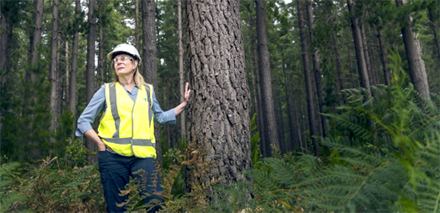OneFortyOne played a major part in a new video released by WoodSolutions looking at the art and science of growing wood. Featured in the video is OneFortyOne Research Manager Danielle Wiseman, who explains the tree growing process and the environmentally friendly methods the company uses to produce timber. Source: Timberbiz
This all starts with choosing the right genetics at OneFortyOne’s nursery where its Pinus radiata seedlings begin their life. Micro cuttings are taken from plants selected for wood properties, growth and small branches which grow into the trees seen in plantations around the Green Triangle.
OneFortyOne’s ultimate aim is to produce a high-quality sawlog which can be used as timber framing in construction projects across Australia.
As a land use, plantation forestry has a very low environmental impact. This makes timber the ultimate renewable. The soil is only disturbed approximately once every 30 years when sites are established ahead of planting.
Chemical use is also very low, with weeds controlled a few times every 30 years when seedlings are establishing. Chemical pest control is very rare in OneFortyOne’s plantations instead, the main pest of pine plantations – the sirex wood wasp – is controlled through natural measures.
The wasp attacks trees which are stressed and therefore OneFortyOne endeavours to keep all its trees healthy by thinning forests when trees start to compete with one another.
The wood harvested from tree thinning is then used in by-products.
However, if trees do become stressed, a technique called trap tree plots is used to control sirex wood wasp. This involves infecting stressed trees with a nematode. When the wasp comes in and lays its eggs in one of those trees, the larvae are infected by the nematode. This makes them sterile when they hatch so they cannot breed any more.
This careful, environmentally friendly approach to plantation forestry means that when consumers choose Australian timber over an imported product, they can be confident it has been produced in a sustainable way which minimises the impact on the environment and provides jobs for people in regional areas.








